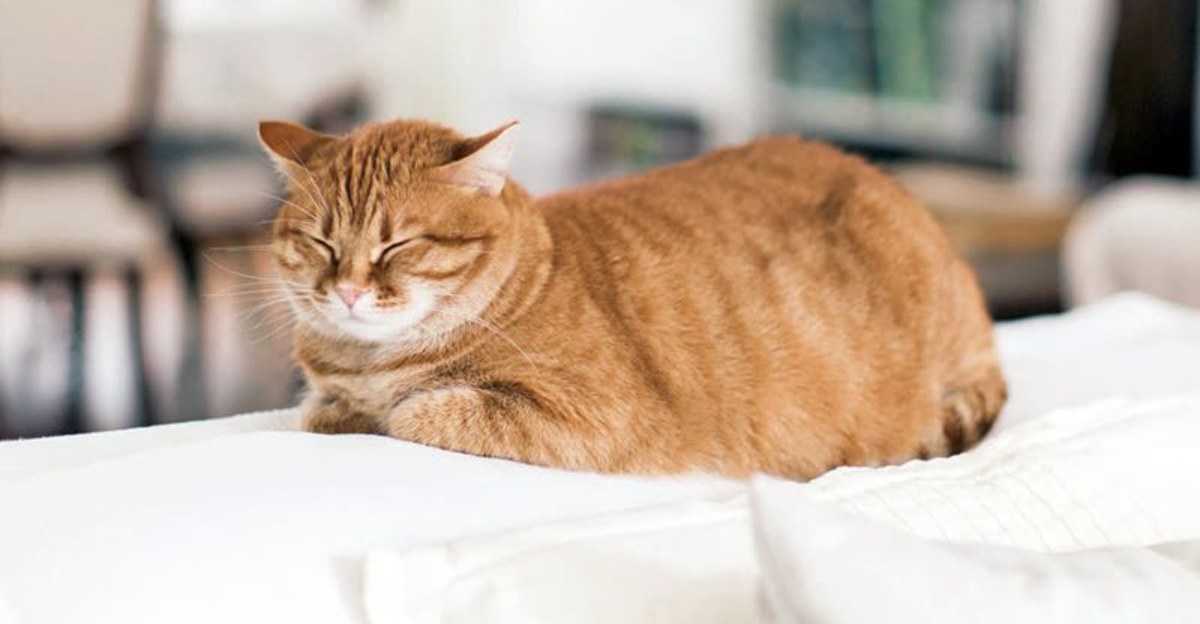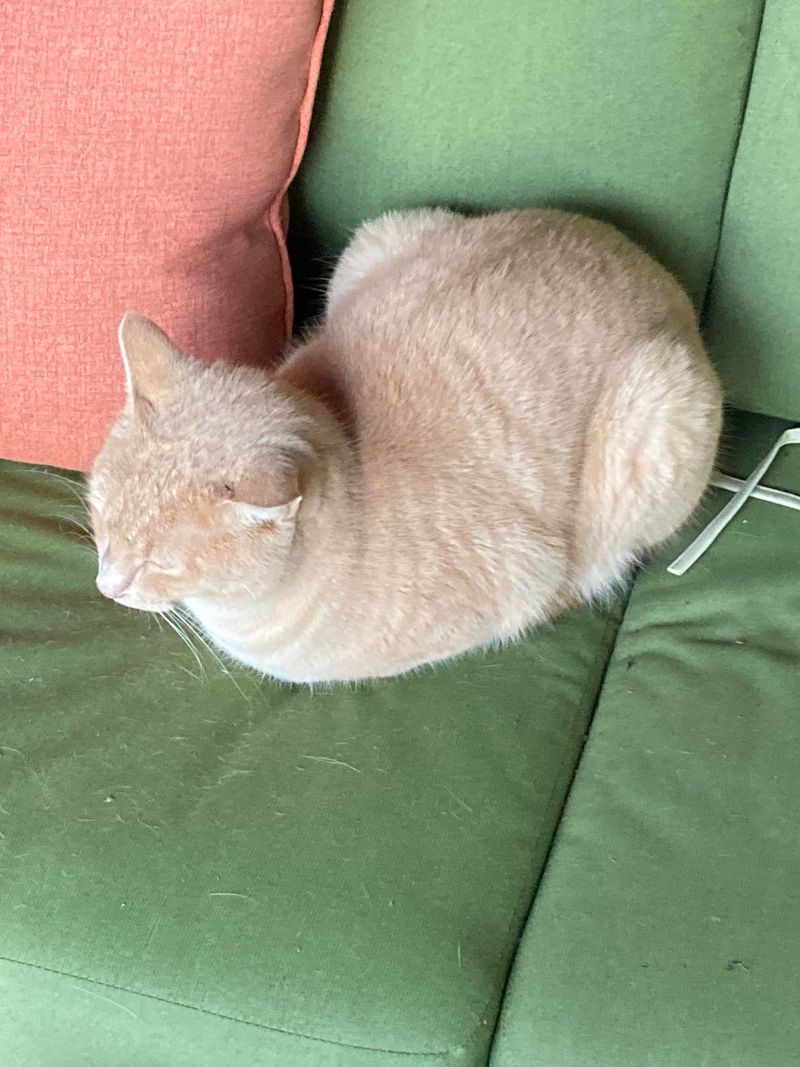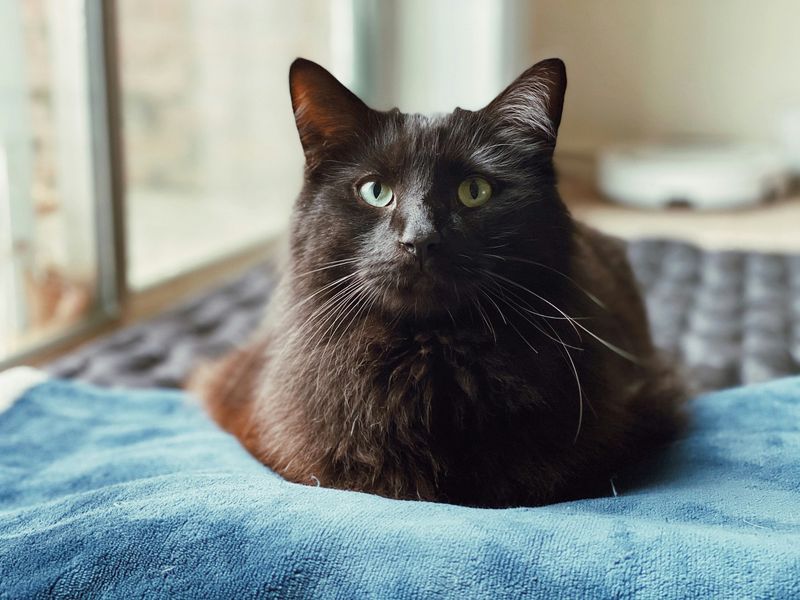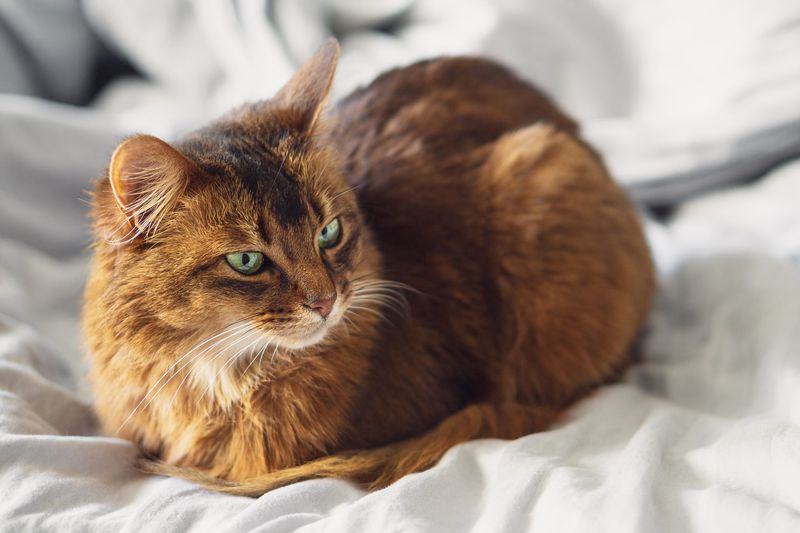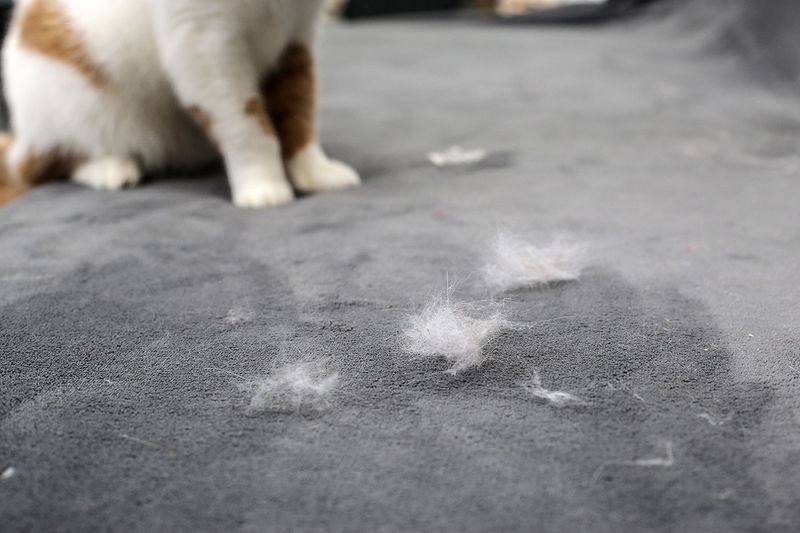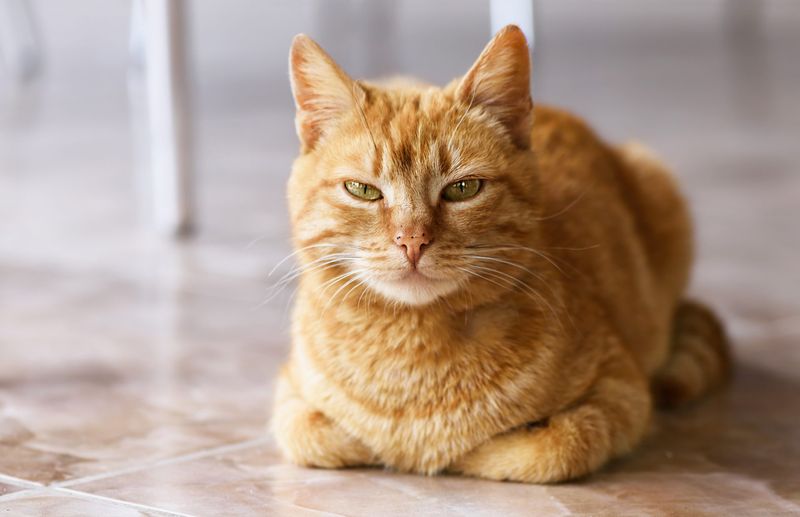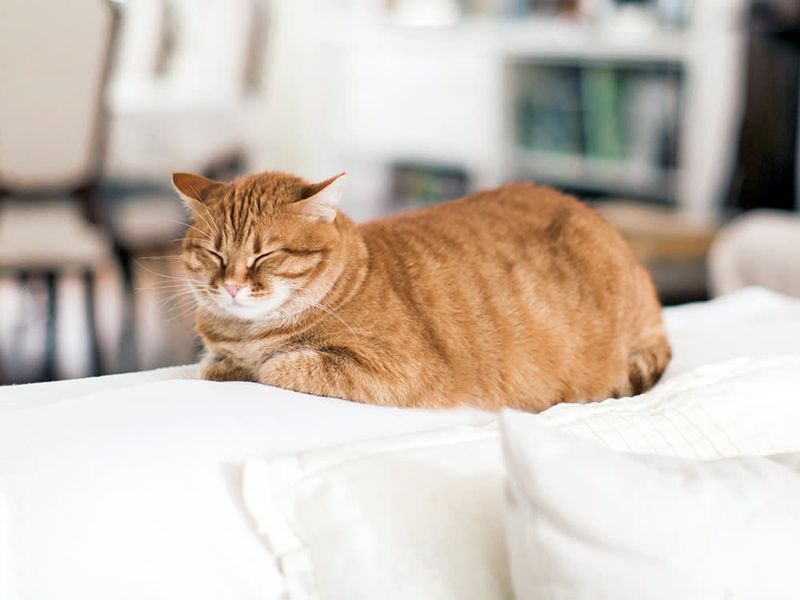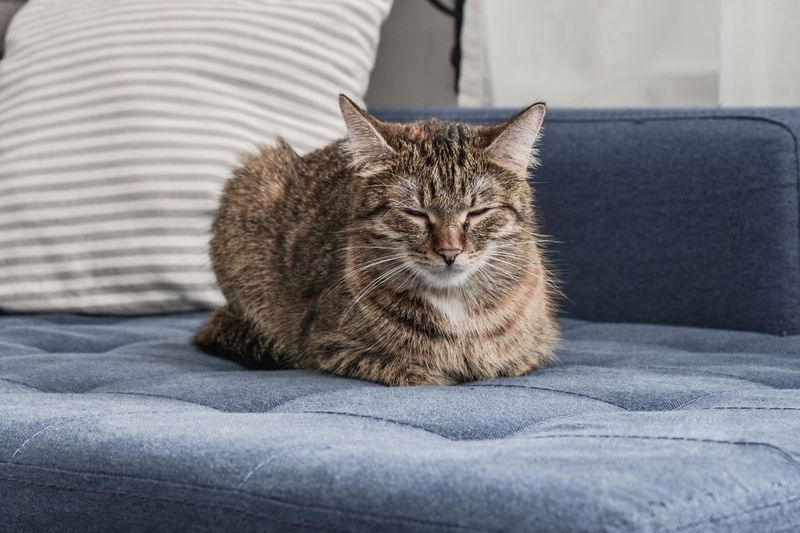📖 Table of Content:
If you’ve ever caught your cat sitting with their paws tucked neatly underneath them, forming a perfect little bread-shaped blob, congratulations—you’ve witnessed the legendary cat loaf. It’s one of the internet’s favorite feline poses, and for good reason: it’s equal parts adorable, mysterious, and oddly dignified. But as cute as it looks, have you ever stopped to wonder why cats loaf in the first place?
Turns out, there’s more behind that compact pose than just cozy vibes. From body temperature regulation to subtle territorial behavior, loafing serves several purposes—some practical, some instinctual, and a few just downright weird. And while it usually means your cat is feeling safe and comfortable, in rare cases it can hint at something more serious.
So what’s really going on when your furry friend transforms into a warm, whiskered dinner roll? Let’s break down the loaf (figuratively, of course) and explore 7 weird reasons cats do it—some will surprise you, and others will make you love your little loaf even more.
1. They’re Keeping Warm
Warmth is a cat’s love language. When the temperature dips, your feline will instinctively curl into a loaf to conserve body heat. Rather than stretching out and exposing their belly, the loaf position keeps paws and vital organs insulated. In doing so, your cat becomes a self-heating fluffball, minimizing heat loss. This pose is especially common near heat sources—sunbeams, laptops, or your fresh-from-the-dryer clothes. Ever notice your cat loafs more in winter? That’s no coincidence. Heat is life to a cat, and loafing is their cozy little survival strategy.
2. They Feel Safe
Comfortable cats loaf with confidence. In the wild, this position wouldn’t allow for a quick escape, so they only do it when they feel secure. Choosing to sit like a loaf means your cat trusts the environment—and probably you, too. It’s a subtle sign of affection that often goes unnoticed. Rather than slinking off into hiding, they opt to rest right out in the open. Loafing shows they’re at ease, relaxed, and not expecting danger. You might think they’re being lazy, but this pose is actually a display of trust. Your cat is saying, “I feel safe here.”
3. It’s a Stealth Nap
Cats are experts at resting without looking fully asleep. The loaf position allows them to sneak in a light doze while staying semi-alert. Instead of flopping down in total relaxation, they sit in a way that lets them perk up if needed. In the wild, this would help them react to threats while conserving energy. Frequently, you’ll see a loafing cat with half-closed eyes and slow, rhythmic breathing. Don’t be fooled—they’re resting, just not totally checked out. This state is often referred to as “loaf nap mode” by cat lovers. It’s their version of being in airplane mode: quiet, reserved, and ready to reengage at any moment.
4. They’re Avoiding Dirty Floors
Let’s be real: cats are bougie. If the surface beneath them is cold, wet, or just not up to their standards, they’ll avoid touching it as much as possible. Loafing helps minimize contact with anything gross, uncomfortable, or beneath their royal paws. You might see them do this outside on damp ground, or inside on tile floors they find unpleasant. Tucking in all limbs keeps the grossness out and the comfort in. This behavior may look cute, but it’s also a clear protest. “I will sit here,” they say, “but I will not touch it.” The loaf becomes a throne when the floor is beneath their standards.
5. They’re Feeling Unwell
While loafing is usually harmless, sometimes it can be a sign of discomfort. A cat in pain—especially abdominal pain—may assume a tighter, more withdrawn loaf. Unlike the relaxed version, this one looks tense, with their head lowered and paws tightly tucked. Don’t ignore this posture if it’s paired with changes in behavior, appetite, or vocalization. Cats are notorious for hiding illness, and subtle changes like this can be early red flags. Pay attention to how frequently and rigidly your cat loafs. If something feels off, it probably is. Always trust your gut—and your loaf’s posture.
6. It’s a Territory Tactic
Cats are subtle, sneaky little landlords. When they loaf in a specific spot, they may be marking it as theirs—not by scent this time, but by presence. They use their loaf form like a little furry flag: “This is mine now.” Especially if they repeatedly loaf in one place—say, your keyboard or that one sunlit corner—they’re quietly laying claim. Other pets often get the message without a sound being made. You might think your cat’s just napping, but they’re holding down their turf. In a multi-cat household, this behavior can be part of the silent dominance game. Loafing, it turns out, can be passive-aggressive real estate management.
7. They Just Like It
At the end of the day, sometimes a loaf is just… a loaf. No deeper meaning, no mysterious instinct—just pure, simple comfort. Cats, much like humans, have personal preferences when it comes to how they sit or rest. You’ll find that some cats loaf constantly, while others rarely do. Maybe it’s a body shape thing, or maybe they just enjoy the snug, tucked-in vibe. There doesn’t always have to be a reason beyond “because I want to.” And honestly? That’s peak cat energy. They loaf because they can, and that’s all the explanation they need.
